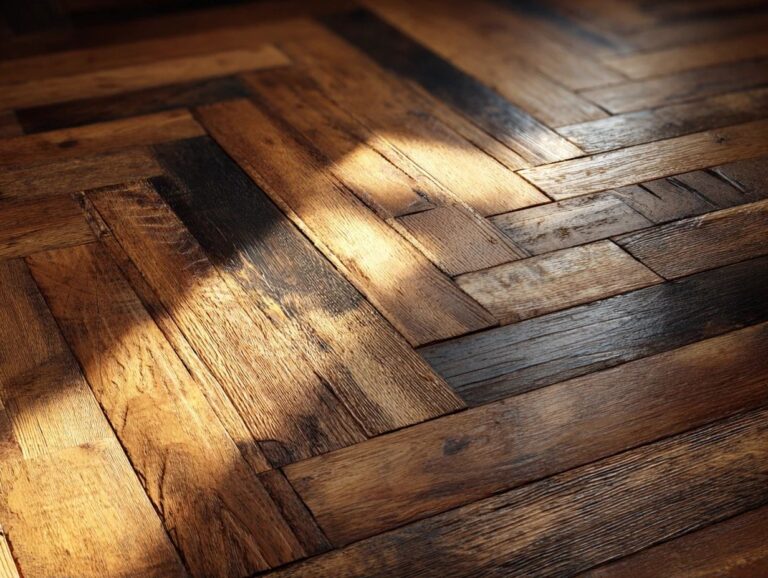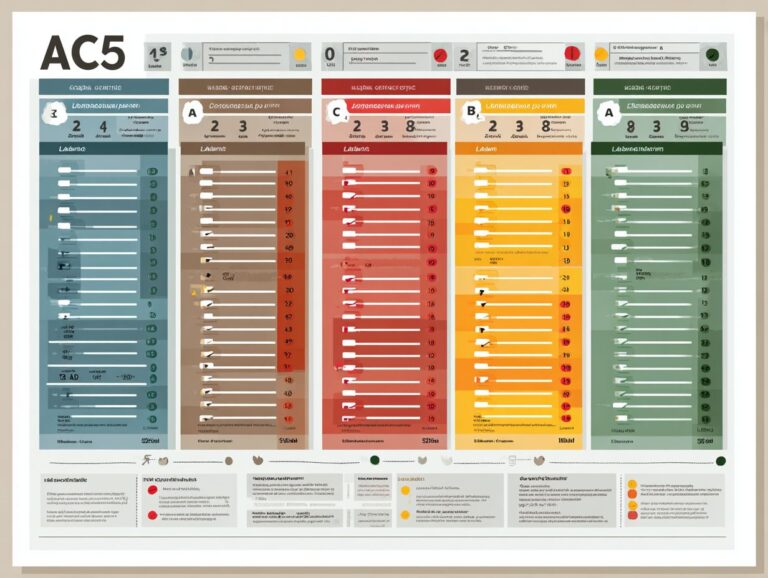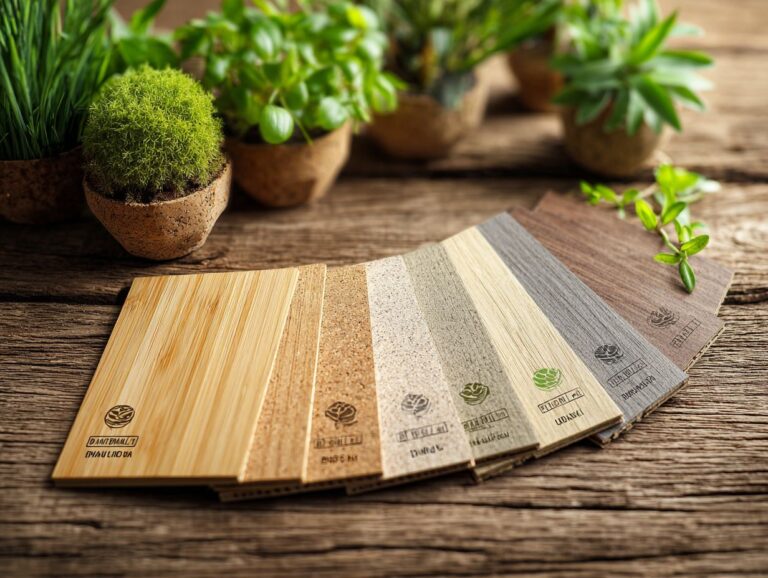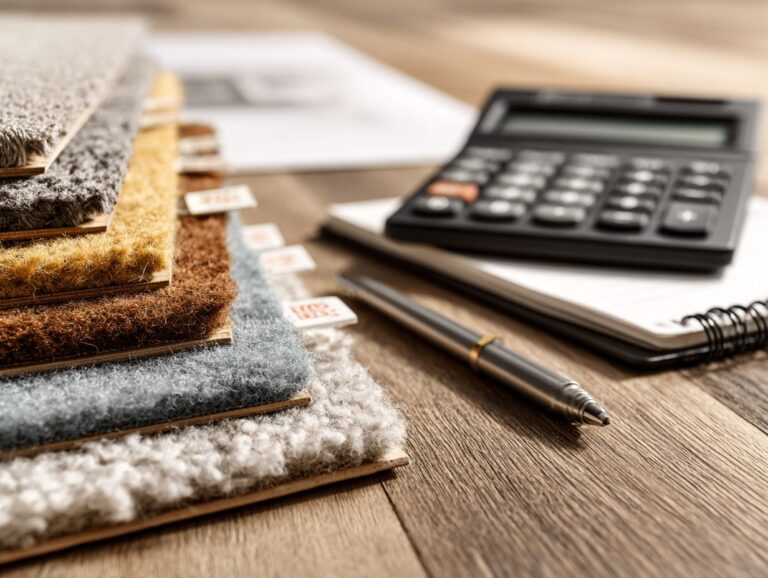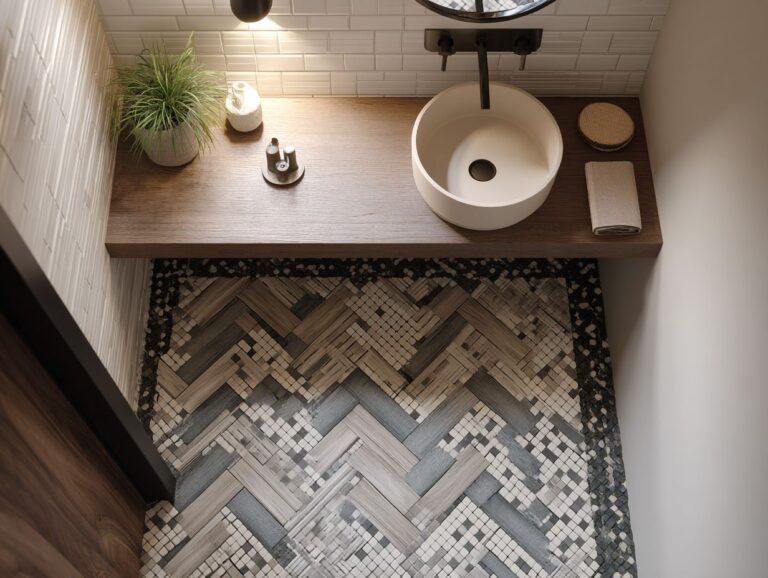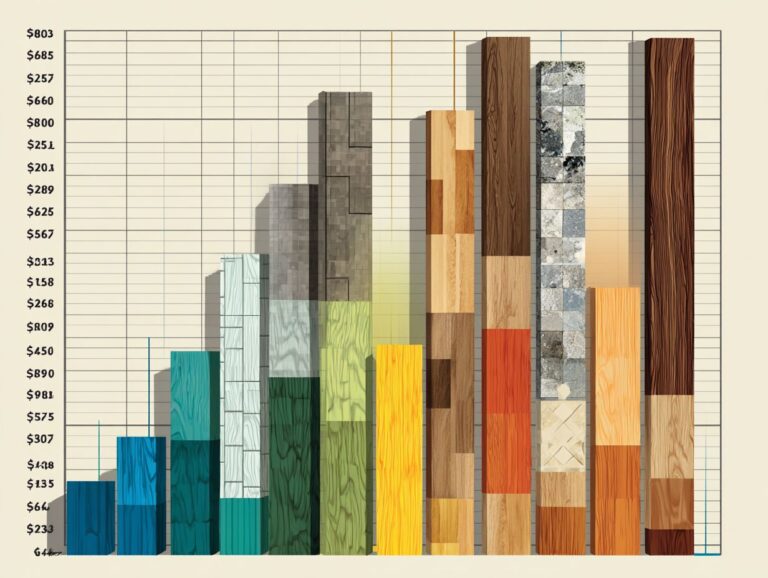Flooring Upgrades That Pay Off – Market Analysis
Improving your flooring can greatly increase your home’s value, making it a wise choice in the current real estate market. Industry experts like Jacob Burdis, Richard Haddad, and Joseph Singsheim emphasize the impact of choices like hardwood flooring and vinyl tile on resale potential. In this article, we’ll look at the latest trends and prices, guiding you to find which flooring changes really increase value and make your property more attractive.
Key Takeaways:
Contents
- Types of Flooring Upgrades
- Cost vs. Value Analysis
- Flooring Market ROI Statistics
- Market Demand for Flooring Upgrades
- Impact on Home Resale Value
- Environmental Considerations
- Future Trends in Flooring Upgrades
- Frequently Asked Questions
- What are the most popular types of flooring upgrades?
- How do flooring upgrades impact the value of a home?
- Are there any specific flooring materials that offer a higher return on investment?
- What factors should be considered when choosing a flooring upgrade?
- How can I make sure my flooring upgrade is worth it over time?
- Can flooring upgrades also improve the energy efficiency of a home?
Importance of Flooring in Home Value

Picking the right flooring can increase a home’s value by as much as 10%, making it a wise decision for those looking to sell.
According to the National Association of Realtors, hardwood flooring offers one of the highest returns on investment, often recouping up to 80% of its cost. To see how different materials contribute to overall value, explore our in-depth analysis on flooring ROI by material.
In contrast, luxury vinyl planks provide a stylish, economical option, yielding about 75% of the investment. Carpeting, while comfortable, generally sees lower ROI at approximately 50%, indicating that it might not offer the best value for resale.
Therefore, focusing on high-quality materials and classic designs is important for homeowners who want to increase property value.
Overview of Market Trends
Current market trends indicate a rising preference for sustainable and luxury flooring options, reflecting broader consumer desires for quality and eco-friendliness.
Research from Hardwood Floors Magazine shows that 60% of homeowners now prioritize environmentally responsible materials when selecting flooring.
Engineered hardwood is particularly favored for its balance of style and sustainability, with sales rising 20% over the past year.
Likewise, luxury vinyl tiles, known for their durability and water resistance, have seen a 15% increase due to their appeal in high-traffic areas.
These trends show that consumers want flooring that looks good, works well, and is environmentally friendly.
Types of Flooring Upgrades
Looking into different flooring options helps homeowners choose what fits their design plans and budget. For those concerned about the long-term implications, understanding the hidden gem of flooring costs can provide invaluable insights.
Hardwood Flooring
Hardwood flooring is a classic option that provides strength and beauty to improve the look of any home’s interior.
With costs ranging from $5 to $15 per square foot, hardwood flooring can fit various budgets.
To get the best results, it’s a good idea to hire experts for installation, as doing it yourself can often result in expensive errors.
Once installed, maintain your floors by sweeping regularly and using a damp mop with a hardwood-safe cleaner. Avoid excessive sunlight exposure by using blinds or area rugs, which can help prevent fading and damage.
By investing in quality materials and proper care, you can enjoy your beautiful floors for decades.
Luxury Vinyl Plank (LVP)
Luxury Vinyl Plank (LVP) has gained popularity for its affordability and versatility, mimicking the look of hardwood while being resistant to moisture.
When considering LVP, factor in the cost, which typically ranges from $2 to $6 per square foot. It’s easy to set up, so it’s a popular weekend project for many people. Most people can finish a standard room in just a few hours with some basic tools.
Maintenance is minimal, requiring only regular sweeping and occasional mopping with a gentle cleaner. For example, a recent update in a family-owned restaurant changed the look and made it stronger against spills and heavy use, showing LVP’s usefulness in busy areas.
Tile Flooring
Tile flooring is an excellent option for areas prone to water damage, combining durability with a wide range of design possibilities.
There are many types of tile to think about when choosing flooring.
- Ceramic tiles, typically costing between $1 to $15 per square foot, are water-resistant and suitable for kitchens and bathrooms.
- Porcelain tiles are durable and range from $3 to $20 per square foot, making them an excellent option for areas with heavy use.
- For a more luxurious look, consider natural stone tiles, like granite or marble, which can cost upwards of $5 to $15 per square foot.
Each tile type caters to different aesthetic preferences and functional requirements, ensuring you find the right fit for your space.
Carpet Options
Carpet remains a popular choice for its warmth and comfort, but homeowners must consider maintenance and material types, including synthetic options.
Among synthetic materials, nylon offers durability and stain resistance, typically costing between $3 and $7 per square foot. In contrast, polyester, ranging from $2 to $5, is softer but less resilient.
Wool, while more luxurious at $5 to $10 per square foot, requires regular professional cleaning to maintain its appearance. Factors like foot traffic and moisture levels also influence the ideal choice; for instance, high-traffic areas benefit from nylon, while cozy bedrooms might suit wool.
Picking the right carpet can greatly improve the atmosphere and coziness of your room.
Cost vs. Value Analysis
Understanding how flooring updates can impact a home’s value is important for anyone looking to maximize their sale price.
Initial Investment for Each Type

Initial investments for flooring upgrades can vary widely: hardwood averages $8/sq ft, while vinyl can be as low as $2/sq ft.
For those looking to budget effectively, consider the total costs including both materials and installation.
For example, engineered hardwood may cost around $5-$7 per square foot, plus $3 for installation, bringing the total to $8-$10 per square foot. In contrast, luxury vinyl tiles can range from $3-$4 for materials and around $2 for installation, leading to an overall cost of $5-$6 per square foot.
Knowing these numbers can help homeowners pick flooring that fits their style and budget.
Return on Investment (ROI) Estimates
Investing in quality flooring can yield significant returns, with estimates showing hardwood offers a 70% ROI when selling a home.
Other flooring options also provide notable returns. Laminate flooring often gives back half of the money spent, making it a cost-effective choice for homeowners who want to save money.
On the higher end, premium tiles can yield around 60%, especially in luxury markets. To maximize your investment, consider the style and durability of the flooring in relation to your target market.
Utilizing local real estate data can help gauge which flooring types are in demand, ensuring your choices align with buyer preferences.
Flooring Market ROI Statistics
Flooring Market ROI Statistics
Floor Covering Market Trends: Consumer Preferences
Floor Covering Market Trends: Market Influences
Floor Covering Market Trends: Region Specific Growth Rate
The Flooring Market ROI Statistics provide an interesting look at the factors influencing the floor covering industry. Information about what consumers like, market factors, and how different regions are growing helps us understand current trends and what causes the market to grow.
Floor Covering Market Trends reflect a shift in consumer preferences towards sustainability and style. Demand for eco-friendly flooring options stands at 15%, indicative of an increasing consumer consciousness about environmental impact and sustainability. Meanwhile, the DIY installation trend is at 25%, showing a significant segment of consumers preferring to manage their own installations, driven by cost-saving motivations and accessibility to easy-install products.
- Luxury Vinyl Tile (LVT) adoption is at 30%, showcasing its growing popularity due to durability, aesthetic appeal, and cost effectiveness. The popularity of LVT shows that people want floors that look fancy but are also affordable.
Looking at Market Influences, the industry is heavily impacted by external factors. Macroeconomic conditions influence 40% of the market, highlighting how economic stability or volatility can affect consumer spending on flooring. Consumer confidence accounts for 35%, reflecting how sentiments regarding economic outlook and personal finances can drive or deter spending in home improvements. Government policies influence 20% of the market, signifying the role of regulations and incentives in shaping industry practices and consumer choices.
The Region Specific Growth Rate indicates varied regional dynamics. Asia Pacific leads with a growth rate of 7.5%, fueled by rapid urbanization, infrastructure developments, and increasing disposable incomes. North America follows at 5.2%, driven by remodeling activities and consumer preference shifts towards modern flooring solutions. Europe’s growth rate is at 4.8%, mainly influenced by eco-friendly trends and technological advancements in flooring products.
In summary, the Flooring Market ROI Statistics highlight an industry in evolution, with sustainability, economic factors, and regional growth driving trends. Knowing these statistics helps people make informed decisions in the market and take advantage of new chances.
Market Demand for Flooring Upgrades
Changes in what people like and the economy’s impact on buying homes affect the need for better flooring.
Current Consumer Preferences
Research shows that today’s consumers lean towards sustainable and low-maintenance flooring solutions, impacting purchase decisions.
A recent survey revealed that 65% of homeowners prioritize eco-friendly materials like bamboo and cork due to their renewable nature.
Low-maintenance options such as luxury vinyl and laminate are preferred for their durability and ease of cleaning. Companies like Shaw and Mohawk are responding to this demand by introducing collections that emphasize sustainability without sacrificing style.
Homeowners should think about the look, environmental effects, and upkeep needed when choosing flooring. This trend shows dedication to sustainability and meets the needs of today’s busy shoppers.
Regional Variations in Demand

Demand for specific flooring types can vary significantly by region, influenced by local climate and housing styles.
In Dallas, where the heat can be intense, homeowners often prefer tile or vinyl flooring for their durability and moisture resistance. These materials are practical and have the modern style seen in many local homes.
Conversely, in Milwaukee, colder winters lead to a preference for carpet and hardwood, which provide warmth and insulation. Local suppliers, such as Tarzynski and Associates for hardwood or The Home Depot for carpets, cater to these regional needs, emphasizing the importance of climate and lifestyle in flooring decisions.
Impact on Home Resale Value
Upgrading the flooring can raise a home’s sale price, so homeowners looking to sell should choose wisely.
Case Studies of Upgraded Homes
Case studies reveal how targeted flooring upgrades can lead to increased sale prices, with some homeowners seeing returns upwards of 15% post-renovation.
For instance, a Portland homeowner invested $8,000 in high-quality hardwood floors, resulting in a property value increase of $40,000. Similarly, a New Jersey family replaced old carpet with luxury vinyl planks, costing $5,000, which attracted buyers and led to a selling price increase of 10%.
Software for home estimation can calculate expected profit before deciding. When planning upgrades, think about local market trends so your flooring choices match what buyers like.
Expert Opinions on Flooring Choices
Experts recommend prioritizing timeless and durable flooring options that align with market trends, such as engineered hardwood or high-end tile.
Adding luxury vinyl plank (LVP) can greatly increase home value while providing strong resistance to moisture and scratches, which makes it perfect for areas with a lot of foot traffic.
For a new look, think about using large porcelain tiles. They make the area look bigger and are simple to clean.
To evaluate your flooring options, consult resources such as the National Wood Flooring Association or visit local home improvement stores for samples and expert advice.
Focusing on quality installations will lead to the best financial results.
Environmental Considerations
As people become more aware of environmental problems, more homeowners are looking for eco-friendly flooring choices that still offer high quality. Learn more about how different flooring materials impact their return on investment to make informed decisions for a sustainable home.
Sustainable Flooring Options
Options like bamboo, cork, and sustainably sourced hardwood are gaining traction among environmentally conscious homeowners.
Bamboo flooring is prized for its rapid renewability and durability, averaging $3 to $8 per square foot.
Cork, known for its thermal insulation properties, costs about $4 to $7 per square foot and contributes to improved indoor air quality by naturally repelling mold and allergens.
Sustainably sourced hardwood provides a classic look with the added benefit of potential carbon sequestration, typically priced between $5 and $12 per square foot.
These materials lower harm to the environment and make living spaces healthier by cutting down on volatile organic compounds (VOCs).
Market Trends in Eco-Friendly Products
The market for eco-friendly flooring products is expected to grow by 15% annually, driven by consumer demand for sustainable choices.
This growth is driven by more people recognizing environmental concerns and wanting healthier homes.
For instance, bamboo and cork floors are becoming popular alternatives due to their renewability and minimal environmental impact. Consumers are increasingly valuing certifications like the Forest Stewardship Council (FSC) label, indicating responsibly sourced materials.
To capitalize on this trend, businesses should consider eco-friendly options in their product lines and highlight sustainability in their marketing efforts, appealing to a growing eco-conscious demographic.
Future Trends in Flooring Upgrades
Upcoming changes in flooring point to more advanced flooring options and new materials that improve function and appearance, including considerations for environmental impact and health (our detailed guide on VOC emissions and health standards explores these aspects in depth).
Technological Innovations

New technologies like digital printing and intelligent flooring systems are changing the flooring industry and providing more choices for customers.
For example, companies such as Mohawk Industries use digital printing to produce very lifelike wood and stone designs. This method offers many design options without the expense of real materials.
Karndean Designflooring has created flooring systems that connect with home automation. This allows users to change lighting and temperature depending on the floor type. These new ideas increase design options and make products longer-lasting and easier to maintain.
Consumers now have more options to combine style with practicality.
Shifts in Consumer Expectations
As consumer expectations evolve, there is a growing demand for flooring solutions that combine style, durability, and sustainability.
Manufacturers must respond by integrating eco-friendly materials like bamboo and reclaimed wood, which appeal to environmentally conscious buyers. They should also invest in new features-such as scratch-resistant finishes and moisture protection-that make products last longer.
For example, luxury vinyl tiles (LVT) look great and are tough, which makes them popular in areas with a lot of foot traffic. Incorporating design tools on websites can help customers visualize options, thus enhancing engagement and driving sales.
Keeping up with these trends is essential for remaining competitive in the changing market.
Summary of Key Findings
This article highlights that investing in quality flooring can lead to significant improvements in home value, particularly through choices like hardwood and LVP.
Hardwood flooring, while more expensive initially, typically yields a higher return on investment due to its timeless appeal and durability. Luxury Vinyl Plank (LVP), on the other hand, offers a cost-effective alternative at a fraction of the price while still mimicking the appearance of wood.
To maximize value, consider features like water resistance for areas prone to moisture and matching the flooring style to your home’s overall aesthetic. Research long-term trends in your local market to make informed decisions that align with buyers’ preferences.
Frequently Asked Questions
What are the most popular types of flooring upgrades?
According to market analysis, the most popular types of flooring upgrades include hardwood, laminate, vinyl, and tile.
How do flooring upgrades impact the value of a home?
Flooring upgrades can significantly increase the value of a home, as they are one of the first things buyers notice and can make a big visual impact.
Are there any specific flooring materials that offer a higher return on investment?
Hardwood flooring is consistently ranked as the flooring material with the highest return on investment, followed by laminate and tile.
What factors should be considered when choosing a flooring upgrade?
Some important factors to consider when choosing a flooring upgrade include the current trends in the market, the durability and maintenance of the material, and the overall cohesive look with the rest of the home’s design.
How can I make sure my flooring upgrade is worth it over time?
To make a flooring upgrade worthwhile, select good materials, hire experts for installation, and follow regular maintenance and cleaning.
Can flooring upgrades also improve the energy efficiency of a home?
Yes, certain types of flooring such as cork and bamboo can improve the energy efficiency of a home by providing better insulation and reducing heating and cooling costs.
